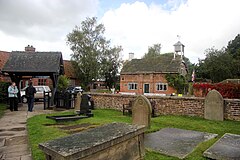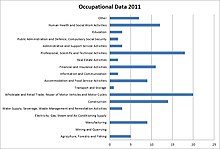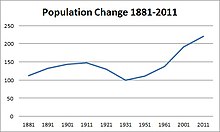
Beeston is a village and civil parish in the unitary authority of Cheshire West and Chester, which itself is in the ceremonial county of Cheshire in the north of England. It is located approximately 10 km south-east of Chester, and approximately 3.5 km south-west of Tarporley, close to the Shropshire Union Canal. According to the 2011 census, Beeston had a population of 188.
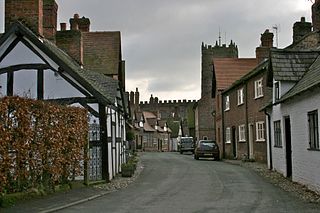
Great Budworth is a village and civil parish in Cheshire, England, four miles (6.4 km) north of Northwich off the A559 road, east of Comberbach, northwest of Higher Marston and southeast of Budworth Heath. Until 1948, Great Budworth was part of the Arley Hall estate.

Macclesfield was, from 1974 to 2009, a local government district with borough status in Cheshire, England. It included the towns of Bollington, Knutsford, Macclesfield and Wilmslow and within its wider area the villages and hamlets of Adlington, Disley, Gawsworth, Kerridge, Pott Shrigley, Poynton, Prestbury, Rainow, Styal, Sutton and Tytherington.

Allostock is a village and civil parish in the unitary authority of Cheshire West and Chester and the ceremonial county of Cheshire, England, about five miles south of Knutsford and 20 miles south of Manchester. Allostock was formerly in the borough of Vale Royal until it was abolished on 1 April 2009 to form Cheshire West and Chester. Allostock is located on an affluent of the river Weaver. It had a population of 816 according to the 2011 census data as well as 325 households.
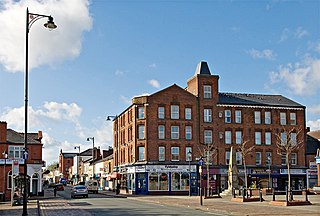
Tyldesley is a market town in Metropolitan Borough of Wigan in Greater Manchester, England. Within the boundaries of the historic county of Lancashire, it is north of Chat Moss near the foothills of the West Pennine Moors, 8 miles (12.9 km) southeast of Wigan and 9 miles (14.5 km) northwest of Manchester. At the United Kingdom Census 2001, the Tyldesley built-up area subdivision, excluding Shakerley, had a population of 16,142.

Blawith and Subberthwaite is a civil parish in the South Lakeland district of Cumbria, England. It is situated in the Lake District National Park, and includes the villages of Blawith and Subberthwaite. In the 2001 census the parish had a population of 189. At the 2011 census Blawith and Subberthwaite was grouped with Torver giving a total population of 265.
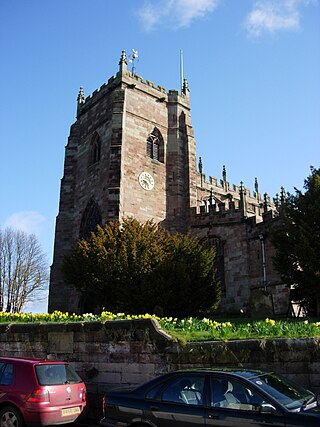
Malpas is a market town and a civil parish in the unitary authority of Cheshire West and Chester and the ceremonial county of Cheshire, England. It lies near the borders with Shropshire and Wales, and had a population of 1,673 at the 2011 census.

Saighton is a village and former civil parish, now in the parish of Aldford and Saighton, in the unitary authority of Cheshire West and Chester and the ceremonial county of Cheshire, England, a few miles south of Chester. The 2011 Census recorded a population for the parish of 202. The civil parish was abolished in 2015 to form Aldford and Saighton. Much of the surrounding land is owned by the Duke of Westminster.

Rushton is a village and civil parish in the unitary authority of Cheshire West and Chester and the ceremonial county of Cheshire, in the north west of England, approximately 6 miles (10 km) west of Winsford and 2 miles (3 km) north east of Tarporley. According to the 2011 census, Rushton has 484 people. Rushton is predominantly countryside, however does includes the village of Eaton. This village contains the Jessie Hughes Village Hall, Eaton Primary School and the church of St Thomas.

Lower Peover is a village in the civil parish of Nether Peover in the unitary authority of Cheshire West and Chester and the ceremonial county of Cheshire, England, approximately 6 miles east of Northwich and 4 miles south of Knutsford. The boundary of the civil parish deviates slightly to include Lower Peover in Nether Peover and not the adjacent civil parish of Peover Inferior. The population of the civil parish at the 2011 census was 415.

St Oswald's Church is in the village of Lower Peover, Cheshire, England. It is recorded in the National Heritage List for England as a designated Grade I listed building. It is an active Anglican parish church in the diocese of Chester, the archdeaconry of Macclesfield and the deanery of Knutsford. Its benefice is combined with that of St Lawrence, Over Peover.

St Lawrence's Church, Over Peover is in the civil parish of Peover Superior. Close to Peover Hall and farm. It lies some 3 miles (5 km) south of the town of Knutsford. The church is recorded in the National Heritage List for England as a designated Grade I listed building. The church is an active Anglican parish church in the diocese of Chester, the archdeaconry of Macclesfield and the deanery of Knutsford. Its benefice is combined with that of St Oswald, Lower or Nether Peover. It is noted for its old chapels and for the monuments to the Mainwaring family.

Hatherton is a hamlet and civil parish in the unitary authority of Cheshire East and the ceremonial county of Cheshire, England. The hamlet is located on the B5071 at SJ687474, 2+3⁄4 miles (4.4 km) to the north east of Audlem and 3+3⁄4 miles (6.0 km) to the south east of Nantwich. The civil parish has an area of 673 hectares and also includes the small settlements of Birchall Moss, Broomlands and part of Artlebrook, with a total population of 360 in 2011. Nearby villages include Hankelow, Stapeley, Walgherton, Wybunbury, Blakenhall and Buerton. The A529 runs through the parish and the River Weaver forms the western boundary.

Peover Superior is a civil parish in the unitary authority of Cheshire East and the ceremonial county of Cheshire, England. It is described by the Office for National Statistics as a village surrounded by inhabited countryside. The civil parish includes the village of Over Peover and the hamlet of Peover Heath.
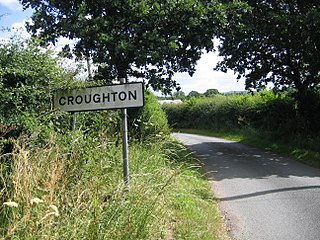
Croughton is a hamlet and civil parish on the outskirts and 3.5 miles (5.7 km) north of the city of Chester, and part of the unitary authority of Cheshire West and Chester and the ceremonial county of Cheshire. The Shropshire Union Canal runs through Croughton.

Elmsted is a village and civil parish in the Folkestone and Hythe District of Kent, England. It is located west of Stone Street, the Roman road which today takes traffic between Canterbury and Lympne. Within the parish are the settlements of Bodsham, North Leigh and Evington. There are six elected members of the Parish Council.
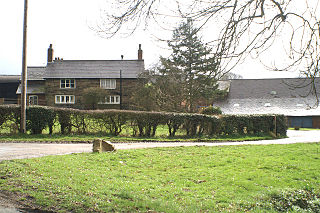
Millington is a civil parish in the Cheshire East district, in the ceremonial county of Cheshire, England. The parish is 8 miles (13 km) from Warrington and 3 miles (5 km) from Altrincham. Its name is a "relic of Saxon clanship – the ton or town of the Millings". The parish is primarily agricultural, with a number of farms including Moss House Farm, Newhall Farm, Mereside Farm, Boothbank Farm and Stonedelph Farm. Millington has been recently described on Britain Streets as a "hamlet or isolated settlement in the inhabited countryside". Millington is situated within the market town Macclesfield. The M56 motorway is close to the parish, which allows travel into areas of Warrington and Manchester, 13 miles (21 km) and 14 miles (23 km) away respectively.
Nether Peover is a civil parish in Cheshire West and Chester, England. It contains twelve buildings that are recorded in the National Heritage List for England as designated listed buildings. St Oswald's Church is listed at Grade I; all the others are at Grade II. Apart from the village of Lower Peover, the parish is almost completely rural. This is reflected in the listed buildings which, apart from the church and its associated structures and the adjacent school, are either domestic buildings or related to farming.

Peover is a rural area in Cheshire, England straddling the boundary of Cheshire West and Cheshire East. It is southwest of Chelford and northwest of Jodrell Bank. Peover is mentioned in the Domesday Book as "Pevre", from a Celtic word meaning "the bright one" referring to the Peover Eye.
